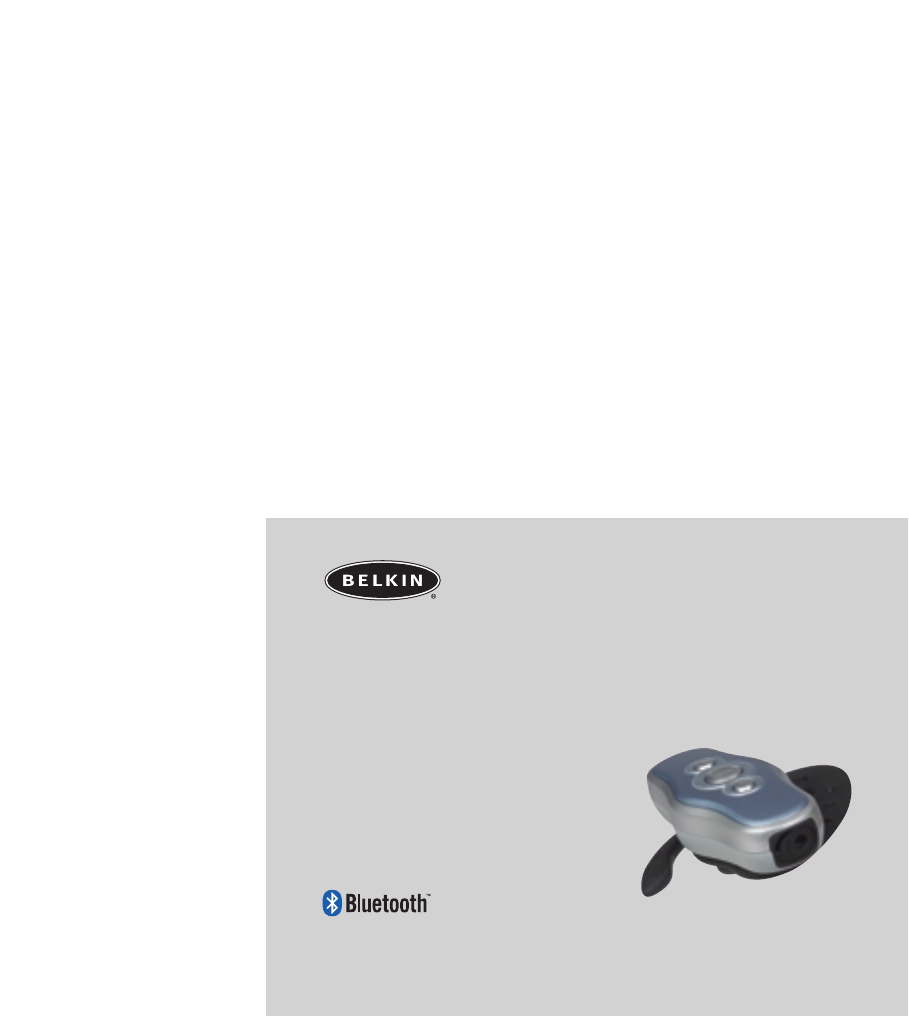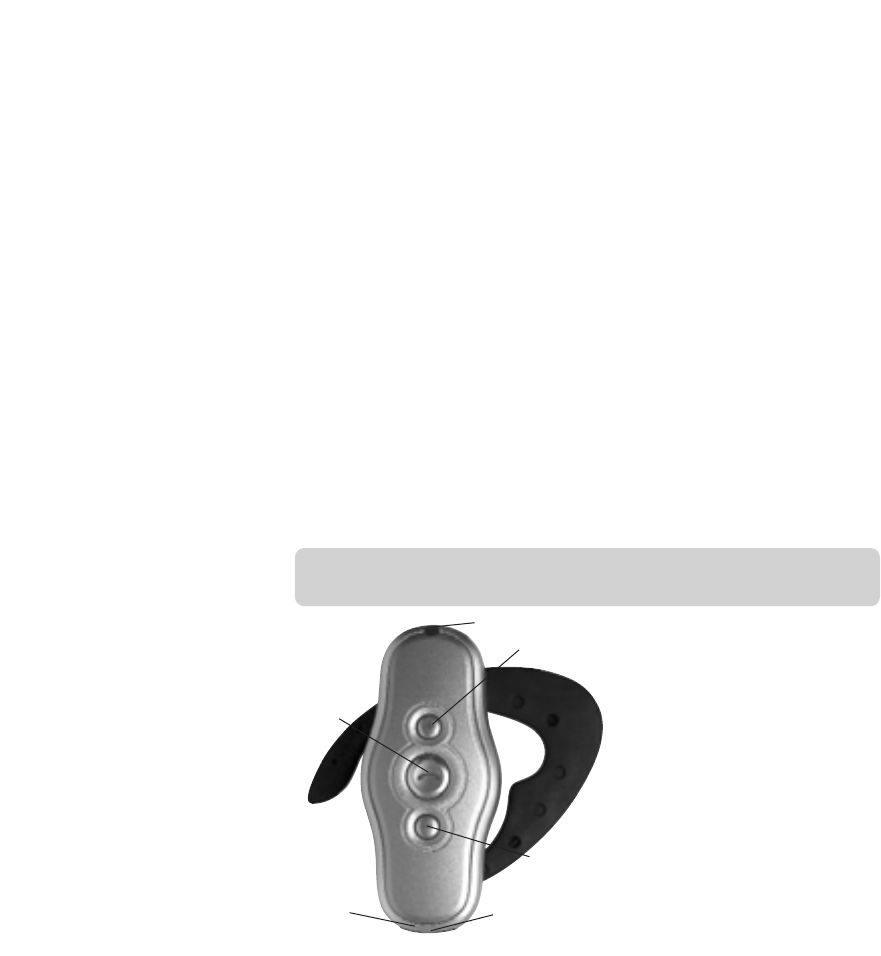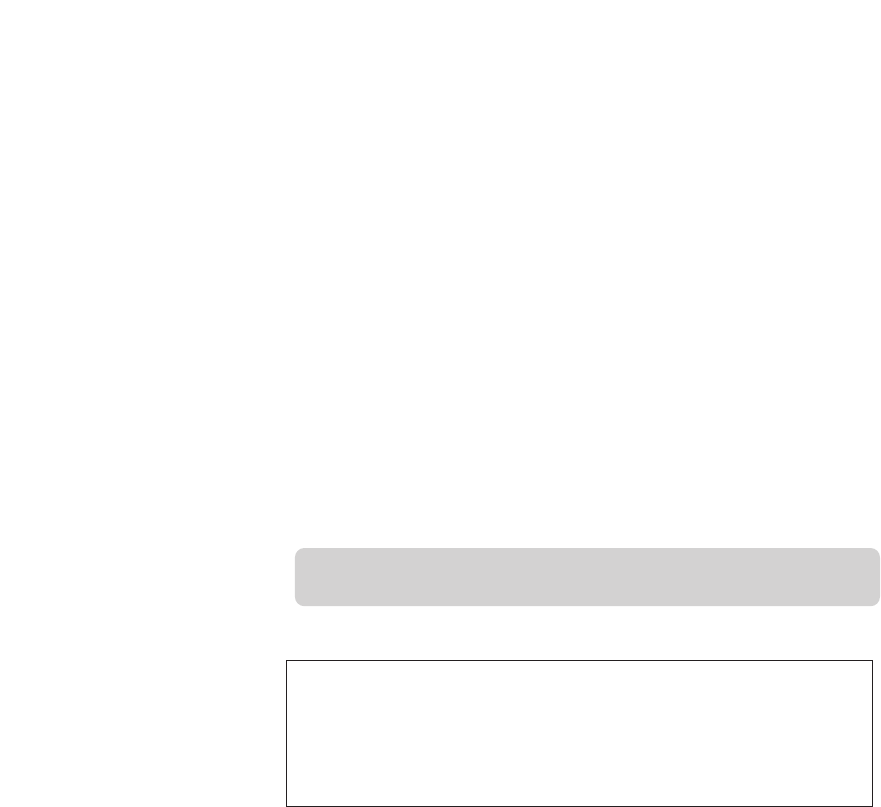Belkin F8V9017 Bluetooth Headset User Manual P74192 Bluetooth HF man
Belkin International, Inc. Bluetooth Headset P74192 Bluetooth HF man
Belkin >
User Manual

Experience the freedom of wireless communication
Bluetooth™
Hands-Free Headset
For use with mobile
phones enabled with
Bluetooth™technology. F8V9017
User Manual

Table of Contents
Important Information for Safe Use ..............................................2
Introduction ................................................................................5
Operation Modes ..........................................................................6
Controls and Functions..................................................................7
Operation ..................................................................................12
Appendix – A ............................................................................19
Regulatory Notices..................................................................19
Federal Communications Commission Notices............................19
Canadian Notice......................................................................20
European Community Notice ....................................................21
Wireless Notice ......................................................................22
1

Important Information for Safe Use
Note: Read this information before using the Bluetooth Hands-Free Headset.
To avoid the risk of product malfunction, product damage, or personal injury, take care to
observe these safety precautions and always use the Bluetooth Hands-Free Headset
according to the instructions for use.
Headset Care
• Never expose to liquid or immerse in water, avoid excessive humidity.
• Do not attempt to disassemble the Headset; it contains no user-serviceable parts. The
rechargeable battery is pre-installed and ready for use.
• Do not drop or throw the Headset and protect it from environments that could
scratch it. Use only a soft cloth to clean it.
• Do not expose the Headset to extremes of temperature.
• Never expose the Headset to open flames and do not dispose of in a fire.
• Do not allow children to play with the Headset. It contains small parts that could
detach to create a choking hazard.
2

Important Information for Safe Use (continued)
Driving
• Check the regulations affecting the use of hands-free devices where you drive. Only
use the Headset when and where it is safe to do so.
Operation in Special Environments
• Medical equipment and hospitals: Due to the risk of interference with medical
equipment, do not use the Headset or a mobile phone nearby without permission.
• Aircraft: To avoid interference with communication systems, turn the Headset OFF
when required to do so by airline regulations. Never use the Headset while in the air.
• If you are unsure if radio-transmitting equipment is allowed in any area, seek
authorization before turning the Headset ON.
Charging
• Only use the charger supplied with the Headset to charge the product to avoid risk of
damage or personal injury.
• The charger can only be disconnected by unplugging, so it is recommended to only
use a power socket easily accessible.
3

Important Information for Safe Use (continued)
Charging (continued)
• Ensure the charger is compatible with the AC supply available before attempting to
plug it in.
• The charger is for indoor use only. Never expose to liquid or immerse in water, avoid
excessive humidity.
Environmental Care
• Please observe local regulations regarding the disposal of your packaging materials
and the product itself. Where possible, promote their recycling.
• This product contains a rechargeable NiMH battery.
4

Introduction
Description
The Bluetooth Hands-Free Headset (Headset) is a complete audio headset supporting
the Bluetooth headset profile. The Headset is a convenient personal device providing 2-
way wireless audio connectivity to other Bluetooth devices such as mobile phones,
PDAs, and PCs.
The use of the Bluetooth short-range wireless standard ensures interoperation with a
wide range of other Bluetooth products.
Features
• Bluetooth v1.1-compliant with headset profile
• Boomless design for comfortable unobtrusive use
• Optimized acoustic design
• Easy-to-operate user interface
• Long talk and standby time
• Rechargeable
• Lightweight
5

Operation Modes
Operation Modes
PIN Code: Keep the 4-digit PIN code information supplied with the Headset in a safe
place. It is unique to your Headset. It will be needed for pairing.
The Headset supports these modes of operation:
• OFF—the Headset is off and cannot receive or make a connection.
• STANDBY—the Headset is ready to receive or make a connection from a paired device
within range.
• INCOMING CALL—the Headset is ready to answer a call being received.
• TALK—the Headset is actively connected to another device and communication can
be made, after answering or initiating a call.
• PAIRING—this is a special mode used to “pair” the Headset ready for use with a
companion device such as a mobile phone.
• CHARGING—the Headset can be charged by connecting the charger supplied.
6

Controls and Functions
Keypad
• One push button to switch the
Headset on/off, to select PAIRING
mode, or to initiate or answer a call
• Two switches to control
receive-volume
7
LED indicator
Volume +
Main
multifunction
button
Volume -
Charging connector
Microphone
Shown configured for wearing on the right ear.

Controls and Functions (continued)
Key Press
Key Press Effect in Current Mode
OFF PAIRING STANDBY INCOMING TALK
CALL
8
Short
(more than
0.5 sec.
and less
than 3
sec.)
Medium
(3–10
sec.)
Long
(more than
10 sec.)
Switch on
and go into
STANDBY
mode
Switch on
and go into
PAIRING
mode
Exit PAIRING
mode and go
to STANDBY
Exit PAIRING
mode, reset
PAIRING
data and
switch OFF
Initiate a
call
Switch OFF
Headset
Answer a call
Switch OFF
Headset
End current
call
(Not possible
when
microphone
is muted)
Mute and
un-mute the
microphone
Mute and
un-mute the
microphone

Controls and Functions (continued)
9
Volume Buttons
These buttons allow the user to select a receive-volume from eight levels. A short press
is used to increase or decrease volume one step. If the key is kept pressed, the volume
is increased or decreased until it is released. A short tone indicates the current
volume level.

Controls and Functions (continued)
10
Red
Green
Red and
Green
Steady ON
Switched
OFF and on
charge,
battery low
Switched
OFF and on
charge,
battery low
Alternate
Blinking
PAIRING
mode
Slow
Flashing
STANDBY
mode and
battery low
STANDBY
mode and
battery high
Fast
Flashing
TALK or
INCOMING
CALL and
battery low
TALK or
INCOMING
CALL and
battery high
Fast
Flashing
with 2
Blinks
TALK and
muted and
battery low
TALK and
muted and
battery high
Steady
OFF
OFF mode
LED Color Effect in Current Mode
LED Indicator
A red/green LED is used to indicate various functions.
Note: When on charge with the Headset not switched OFF, the LED flashing sequence is
not changed, but the LED color will change from red to green as the battery reaches
full charge.

Controls and Functions (continued)
Sounds
In order to make operation easier, the Headset generates several sounds:
Switch-on tone
Switch-off tone
Pairing tone
Reset tone
Confirmation tone
11
Error tone
Alert tone
Mute tone
Ring tone

Operation
Operation
Refer to the “Important Information for Safe Use” section above for important safety
information before use.
Charging Before First Use
The Headset will not be fully charged when it is unpacked. It is recommended to
place it on charge for five hours before first use; the charging section describes how
to do this.
Wearing the Headset
• The Headset can be worn on either ear, by changing the orientation of the ear hook.
• To remove the ear hook, carefully lever it from the back of the Headset by hand.
• The ear hook can be replaced either way up. Note the indentation in the center to
properly orient the ear hook on the Headset.
• With the user controls facing the user and the LED at the top, the closed loop of the
ear hook should “point” right for operation on the right ear, and left for the left ear.
• To place on the ear, hold the Headset in the hand and push the open end of the
hook slightly away from the Headset body.
12

Operation (continued)
• Slide the open end of the ear hook onto the ear from the front. It will tend to lock in
position with a slight twisting motion.
• The ear hook is malleable for further slight adjustment.
Switching On
1. Press the main button until a short tone is heard in the earpiece.
2. Release the button. The Headset will generate the switch-on melody in the earpiece.
3. The LED will flash the signal to indicate the Headset is now in STANDBY mode ready
to be paired, or if already paired, ready to make or receive a call.
Switching Off
1. Press the main button until a short tone is heard in the earpiece.
2. Release the button. The Headset will generate the switch-off melody.
3. The LED will stop flashing.
13

Operation (continued)
Preparing the Headset for Use—Pairing
PIN Code: The PIN code for the Headset is preset to 1234. It will be needed for pairing.
Before the Headset can communicate, it must be paired to the companion device it will
be used with, such as a mobile phone. This is to ensure the Headset only communicates
with the device chosen by the user and not any other Bluetooth devices in range.
Pairing information is stored by the Headset and can be changed at any time.
The exact process to pair the Headset will also depend on the device it is paired with.
The user manual for that device will give instructions on how to do this. In all cases,
the Headset will need to be put into PAIRING mode, which is described here:
1. If the Headset is on, switch it off.
2. Press and hold the main button.
3. When the short tone is heard, keep the button pressed until the pairing melody
is generated.
14

Operation (continued)
4. The LED will alternately flash red/green.
5. Follow instructions for the companion device to pair to the Headset.
6. When prompted on the companion device, enter the PIN code for the Headset.
7. When paired, the Headset will give a short confirmation tone and switch to STANDBY,
ready for operation.
Receiving and Ending a Call
• To receive a call, the Headset must be in STANDBY mode.
• When a call is received, the Headset will generate a ringing signal in the earpiece.
• The call may be answered by a short press of the main button.
• The connection will be made to the companion device, and in the case of a mobile
phone, the call will be answered.
• During a call, when in TALK mode, the microphone may be muted and un-muted by a
medium press of the main button.
• A short press of the main button will end a call.
• If the Headset is muted, it is necessary to un-mute with a medium button press
before ending the call. This avoids accidentally ending a call when trying to un-mute.
15

Operation (continued)
Initiating a Call
• When in STANDBY mode, a short press will initiate a connection to the
companion device.
• For example, this could be used to initiate a call with a mobile phone.
• During a call, when in TALK mode, the microphone may be muted and un-muted
by a medium press of the main button.
• A short press of the main button will end a call.
• If the Headset is muted, it is necessary to un-mute with a medium button press
before ending the call. This avoids accidentally ending a call when trying to un-mute.
Operation—In and Out of Range
The Headset is designed for use within a few meters of the companion device, typically
a range of up to 10 meters can be expected. When approaching the limit of usable
range, short breaks may be heard in the audio.
If the Headset moves out of range during a call, the connection will be terminated and
the Headset will return to STANDBY mode.
16

Operation (continued)
Battery Status
The LED will flash in TALK, muted, and STANDBY mode. When the battery has adequate
charge, this will be with a green color, changing to red when the battery is low.
Charging
The Headset is supplied with a charger to recharge the internal battery. Do not attempt
to use any other charger and refer to the “Important Information for Safe Use” section
above for important safety information.
• To charge, plug the charger into an available AC supply socket and plug the small
connector on the charging lead into the matching socket near the microphone.
• The Headset is normally charged in OFF or STANDBY modes. Charging is not active in
TALK mode.
• With the Headset turned OFF, the LED will show a steady red indication until the
Headset is charged.
• If the Headset is in any other mode when connected to the charger, the LED flashing
sequence does not change, but the LED color will indicate the charge status.
17

Operation (continued)
• Sometimes, when the Headset is placed on charge with the LED still showing a green
color, the LED color may change initially from green to red. This is normal and
indicates the Headset is not yet fully charged immediately after connecting the
charger.
• The charge time is approximately five hours from discharged to fully charged.
Troubleshooting—Product Reset
• If the Headset stops operating, first ensure it is charged by charging it for
five hours.
• If the Headset remains non-functional, it may be reset by the following method:
Press and hold the volume-down button, and at the same time, plug in the charger
as though to place the unit on charge.
• The Headset will reset itself and be left in OFF mode.
18

Appendix – A
Regulatory Notices
To identify this product, refer to the part or model number on the product label.
For customer support and for regulatory issues, contact Belkin at 1-800-2BELKIN.
Federal Communications Commission Notices
This equipment has been tested and found to comply with the limits for a Class B
digital device, pursuant to Part 15 of the FCC Rules. These limits are designed to provide
reasonable protection against harmful interference in a residential installation. This
equipment generates, uses and can radiate radio frequency energy and, if not installed
and used in accordance with the instructions, may cause harmful interference to radio
communications. However, there is no guarantee that interference will not occur in a
particular installation. If this equipment does cause harmful interference to radio or
television reception, which can be determined by turning the equipment off and on,
the user is encouraged to try to correct the interference by one or more of the
following measures:
• Reorient or relocate the receiving antenna.
• Increase the separation between the equipment and receiver.
• Connect the equipment into an outlet on a circuit different from that to which the
receiver is connected. 19

Appendix – A
• Consult the dealer or an experienced radio/TV technician for help.
We, Belkin Components, of 501 West Walnut Street, Compton, CA 90220, declare under
our sole responsibility that the product,
F8V9017
to which this declaration relates, complies with Part 15 of the FCC Rules. Operation is
subject to the following two conditions: (1) this device may not cause harmful
interference, and (2) this device must accept any interference received, including
interference that may cause undesired operation.
Modifications
The FCC requires the user to be notified that any changes or modifications made to this
device that are not expressly approved by the manufacturer may void the user’s
authority to operate the equipment.
Canada- Industry Canada (IC)
The wireless radio of this device complies with RSS 139 & RSS 210 Industry Canada.
This Class B digital complies with Canadian ICES-003.
20

Appendix – A
European Community Notice
Hereby, Belkin Corporation declares that this Bluetooth Hands-Free Headset is in
compliance with the essential requirements and other relevant provisions of Directive
1999/5/EC.
Products bearing the CE marking comply with the R&TTE Directive (1999/5/EC), EMC
Directive (89/336/EEC), and the Low Voltage Directive (73/23/EEC) issued by the
commission of the European Community Compliance with these directives implies
conformity to the following European Norms (in parentheses are the equivalent
international standards and regulations):
• EN 60950 (IEC60950) – Product Safety
• ETS 300 328 – Technical requirements for radio equipment
• EN 301 489-17 – General EMC requirements for radio equipment
This product may be used in all EU and EFTA countries.
21

Appendix – A
Wireless Notice
In some situations or environments, the use of wireless devices may be restricted. Such
restrictions may apply aboard airplanes, in hospitals, near explosives, in hazardous
locations, etc. If you are uncertain of the policy that applies to the use of this device,
please ask for authorization to use it prior to turning it on.
22

Belkin Components
501 West Walnut Street
Compton • CA • 90220 • USA
Tel: 310.898.1100
Fax: 310.898.1111
Belkin Components, Ltd.
Express Business Park
Shipton Way • Rushden • NN10 6GL
United Kingdom
Tel: +44 (0) 1933 35 2000
Fax: +44 (0) 1933 31 2000
Belkin Components B.V.
Starparc Building • Boeing Avenue 333
1119 PH Schiphol-Rijk • The Netherlands
Tel: +31 (0) 20 654 7300
Fax: +31 (0) 20 654 7349
Belkin Components, Ltd.
7 Bowen Cresent • West Gosford
NSW 2250 • Australia
Tel: +61 (0) 2 4372 8600
Fax: +61 (0) 2 4325 4277
Tech Support
US: 310.898.1100 ext. 2263
800.223.5546 ext. 2263
310.604.2089 (fax)
techsupp@belkin.com
Europe: 00 800 223 55 460
eurosupport@belkin.com
© 2002 Belkin Components. All rights reserved.
All trade names are registered trademarks of respective manufacturers listed.
belkin.com